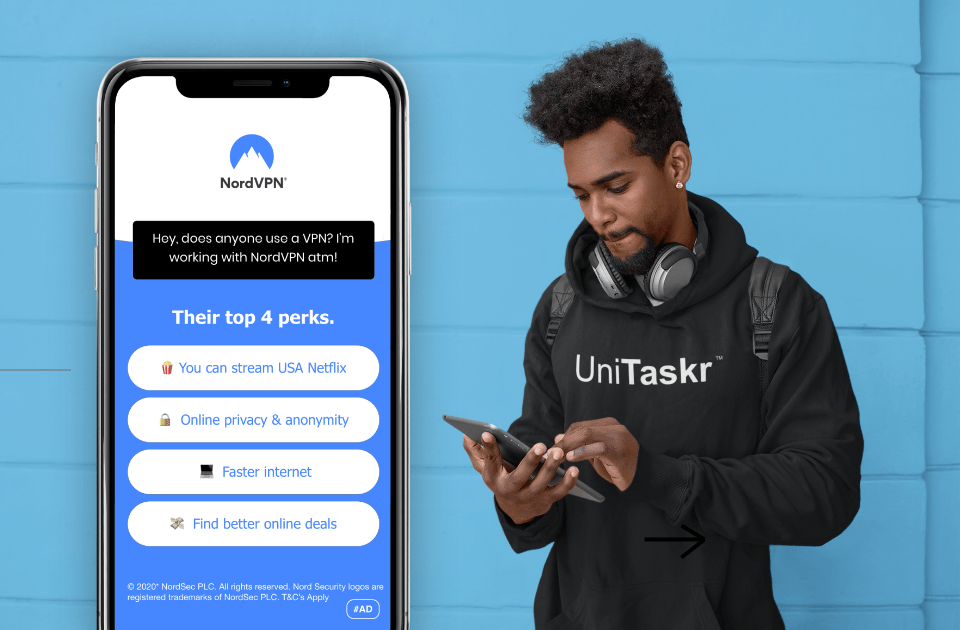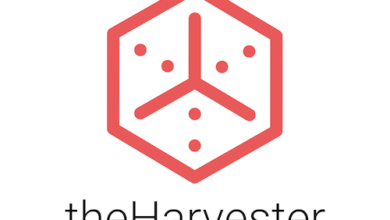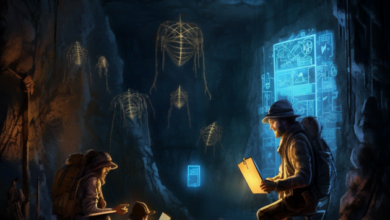Collaboration and Documentation Tools: The Cornerstones of Successful Bug Hunting
Enhancing Teamwork and Strategy in the World of Cybersecurity

In the intricate and high-stakes world of bug bounty hunting, the role of collaboration and documentation tools is fundamental and often underappreciated. These tools are not merely aides but crucial components that drive the efficiency, effectiveness, and success of cybersecurity operations. This article aims to shine a spotlight on how collaboration and documentation tools serve as the linchpins in the bug hunting process, enabling teams and individuals to manage complex tasks with greater ease and precision.
Bug bounty hunting, by its nature, is a field that demands meticulous attention to detail, strategic planning, and seamless teamwork. In such a scenario, being equipped with the right set of tools to facilitate communication, organize findings, and document processes is not just beneficial but essential. We will delve into various platforms and applications specifically designed for these purposes, showcasing how they can transform the dynamics of bug hunting from individual efforts into a cohesive, collaborative, and highly productive endeavor.
The focus will be on illustrating the importance of collaboration in bug bounty hunting. Coordinated teamwork, enabled by tools like Slack for communication and Trello for project management, can significantly amplify the ability to identify and resolve vulnerabilities more effectively and efficiently. Furthermore, we will explore the crucial role of documentation tools such as Confluence, Notion, and Google Docs, emphasizing how they aid in keeping detailed and organized records of every step in the bug hunting process.
In this exploration, we aim to provide insights into the best practices for using these tools, incorporating real-world examples and case studies. Our goal is to equip readers with practical knowledge and strategies, enabling them to integrate these essential tools seamlessly into their cybersecurity practices and, in turn, enhance their success in the dynamic field of bug bounty hunting.
Exploring Key Collaboration and Documentation Platforms
Following our introduction to the significance of collaboration and documentation tools in bug bounty hunting, this section delves into various platforms and applications designed for these purposes. We will explore how these tools can transform bug hunting from isolated efforts into a unified, productive, and collaborative venture.
Collaboration Platforms: Streamlining Team Efforts
- Slack for Communication: Slack stands out as a premier communication tool in the bug bounty community. It allows for the creation of dedicated channels for different projects or topics, enabling team members to discuss, share insights, and update each other in real-time. For instance, a bug-hunting team might have a channel for discussing new vulnerabilities, another for sharing tools and resources, and yet another for general communication.
- Trello for Project Management: Trello offers a visual approach to project management with its board and card system. Each card can represent a task or a bug, and boards can be organized by project phases or priorities. This setup is particularly effective for tracking the progress of identified vulnerabilities, from discovery to resolution, allowing all team members to see the status of each task at a glance.
Documentation Tools: Ensuring Accurate and Accessible Records
- Confluence for Comprehensive Documentation: Confluence is widely used for its ability to create detailed and structured documentation. It’s particularly useful for compiling comprehensive reports on vulnerabilities, including descriptions, reproduction steps, and resolution strategies. Its collaborative nature means multiple team members can contribute to and edit documents, ensuring all information is current and accurate.
- Notion for Flexible Documentation Needs: Notion’s versatility makes it ideal for various documentation requirements. Teams can use it to create a shared knowledge base, manage bug reports, or even track research findings. Its user-friendly interface and customizable templates allow for creating a tailored documentation environment that can evolve with the team’s needs.
- Google Docs for Real-Time Collaboration: For teams or individuals looking for a straightforward and accessible tool, Google Docs offers real-time collaborative editing. This is particularly useful for quickly drafting and reviewing reports or strategies with team members or clients, regardless of their location.
By integrating these collaboration and documentation platforms into their workflow, bug bounty hunters can enhance their efficiency and efficacy. These tools not only streamline communication and project tracking but also ensure that vital information is accurately recorded and easily accessible. In the next section, we will provide insights into best practices for using these tools, including tips on setting up efficient workflows, ensuring data security, and fostering a culture of open communication and knowledge sharing within a team.
Best Practices for Effective Use of Collaboration and Documentation Tools
Building on our exploration of key platforms, this section focuses on best practices for utilizing these collaboration and documentation tools effectively in bug bounty hunting. These practices are designed to optimize workflows, ensure data security, and promote a culture of open communication and knowledge sharing within teams.
Optimizing Workflows with Collaboration Tools:
- Structured Communication in Slack: Organize Slack channels by specific projects or topics to avoid information overload. Use features like pinned messages for important updates and integrate Slack with other tools like GitHub for streamlined updates on code changes or project progress.
- Task Management in Trello: Utilize Trello’s board and card system to track the lifecycle of each bug or task. Create custom labels for quick identification of task status (e.g., ‘Identified’, ‘In Progress’, ‘Resolved’) and assign cards to specific team members for accountability.
Ensuring Effective Documentation:
- Template Utilization in Confluence: Develop standardized templates in Confluence for common documentation types, such as vulnerability reports or project summaries. This ensures consistency across all documents and saves time in setting up new pages.
- Centralized Knowledge Base in Notion: Use Notion to create a centralized repository for all your bug hunting information, including methodologies, tools, and past findings. Regularly update this knowledge base to keep it current and useful for all team members.
- Version Control in Google Docs: Take advantage of Google Docs’ version history feature to track changes over time, particularly when multiple contributors are involved in a document. This is crucial for maintaining the integrity of the document and understanding the evolution of ideas and strategies.
Fostering Open Communication and Knowledge Sharing:
- Regular Check-ins and Updates: Schedule regular meetings or check-ins using Slack or video conferencing tools to discuss progress, address challenges, and brainstorm solutions. This maintains team cohesion and ensures everyone is aligned with the project goals.
- Encourage Knowledge Sharing: Create a culture where team members are encouraged to share new findings, tools, or techniques they come across. Utilize platforms like Confluence or Notion for team members to contribute articles, guides, or tutorials they find useful.
- Security Best Practices: Always ensure that sensitive information is shared securely. Use encrypted communication channels and be cautious about access controls and permissions in your documentation and project management tools.
By adhering to these best practices, bug bounty hunters and teams can significantly enhance their collaborative efforts, streamline their documentation process, and ensure a more organized and productive approach to their projects. In the next section, we will conclude the article by showcasing real-world examples and case studies that demonstrate the successful application of these tools and practices in bug bounty hunting.
Case Study Highlights: Practical Success Stories in Bug Hunting
In the world of bug bounty hunting, the right blend of collaboration, communication, and documentation can make a significant difference in outcomes. Here, we present three real-world case studies that exemplify how the strategic use of these tools has led to successful resolutions of cybersecurity challenges.
1. A Major Vulnerability Uncovered Through Team Collaboration: In this case, a team of bug bounty hunters identified a critical vulnerability in widely used software. The discovery and resolution process was significantly enhanced through the use of Slack for real-time communication and Trello for efficient task management.
Example: The team organized their findings and strategies in a Trello board, with each card detailing specific aspects of the vulnerability. Slack channels were dedicated to discussing these aspects, enabling swift decision-making and exchange of ideas. This coordinated effort led to not only the timely identification of the vulnerability but also the development of an effective patch, which was then communicated to the software developers.
2. Streamlined Documentation Leading to Efficient Resolution: Another example demonstrates the power of organized documentation in bug hunting. A bug bounty team encountered a complex security flaw in a web application and used Confluence to document their findings and strategies.
Example: The team created a comprehensive Confluence page detailing the nature of the flaw, steps to reproduce it, and potential impacts. This page served as a central repository for all information related to the flaw, ensuring that every team member was on the same page. The structured documentation provided a clear roadmap for addressing the issue, facilitating a methodical and efficient approach that eventually led to a successful resolution.
3. Community Knowledge Sharing as a Catalyst for Success: The final case study highlights the importance of community knowledge sharing. A bug hunter faced a challenging security issue and turned to a document shared within a cybersecurity community on Google Docs.
Example: The document, collaboratively created by a global community of bug hunters, contained various insights and strategies for tackling a range of security challenges. The bug hunter found a section in the document that addressed a similar issue and applied the suggested strategies to their own challenge. This approach not only resolved the issue more quickly than if they had worked alone but also underscored the value of community support and shared knowledge in the cybersecurity ecosystem.
These case studies illustrate that the strategic use of collaboration and documentation tools goes beyond mere organization; it empowers teams and individuals to tackle complex security challenges more effectively and efficiently. They serve as practical examples for bug bounty hunters looking to enhance their methodologies and achieve greater success in their cybersecurity endeavors.
Invitation for Community Engagement at BugBustersUnited
As we conclude this exploration of collaboration and documentation tools in bug bounty hunting, we at BugBustersUnited invite you to contribute to the ongoing conversation. Your experiences, insights, and suggestions are invaluable in enriching our collective understanding and enhancing our practices in the field of cybersecurity.
Whether you have a unique strategy that worked wonders, an anecdote about how a specific tool helped overcome a challenge, or any feedback on the content of this article, your contributions are essential in fostering a collaborative and informed community. We encourage you to share your thoughts and engage with fellow professionals and enthusiasts on our platform.
Conclusion: Empowering Cybersecurity Practices Through Collaboration and Documentation
In summary, the strategic use of collaboration and documentation tools is not merely a theoretical concept but a practical and vital approach to achieving success in bug bounty hunting. This article has aimed to provide you with insights into how effectively utilizing these tools can enhance the efficiency, efficacy, and collaborative efforts in your cybersecurity endeavors. By applying the lessons from the case studies and best practices discussed, you can elevate your strategies and achieve more successful outcomes in the dynamic world of bug hunting.
We hope this article serves as a valuable resource, inspiring you to integrate these essential tools into your cybersecurity practices and contributing to your journey towards becoming a more adept and successful bug hunter. Join us at BugBustersUnited in shaping a more secure digital world, one collaboration at a time.





